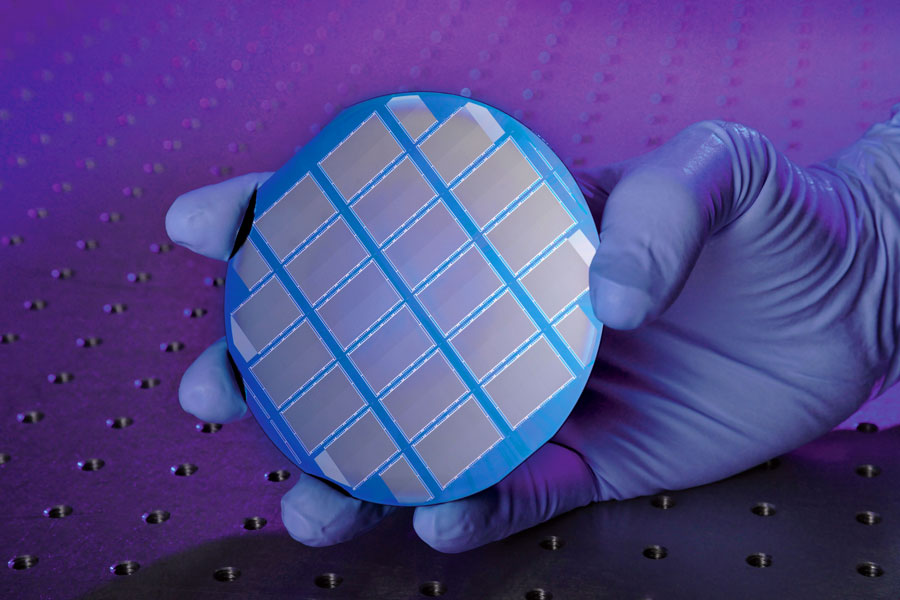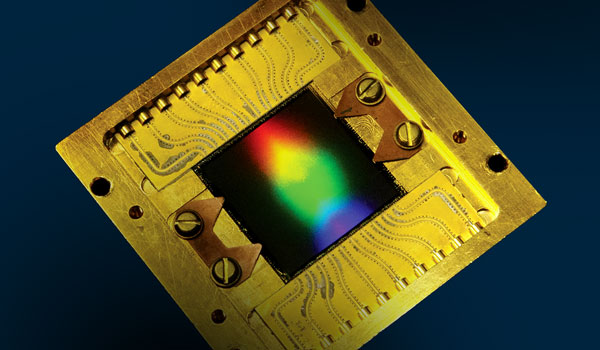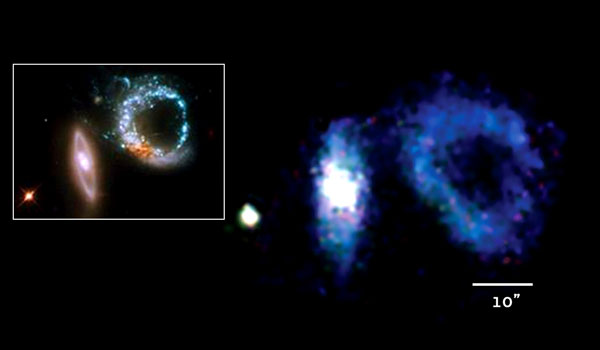Above:
A wafer of several of the first 10,000-pixel near-IR MKID arrays for the planet-finding instrument named Dark-speckle Near-IR Energy-resolved Superconducting Spectrometer (DARKNESS).
OLE MKIDs
Looking for Exoplanets in High Definition
Bruce Bumble
Optical Lumped Element (OLE) Microwave Kinetic Induction Detector (MKID) arrays use superconductors to enable simultaneous single photon counting and energy resolution. Each pixel is composed of a tuned inductor-capacitor (L-C) resonator, and up to 2000 such pixels are coupled to a single microwave transmission line. This multiplexing technique simplifies wiring and reduces the heat load of science instruments operated at sub-Kelvin temperatures. The primary advantages of MKIDs over conventional detectors are the absence of read noise and dark current and a fast readout time, the equivalent of several thousand frames per second.
Researchers at MDL developed and fabricated advanced UV-optical-near infrared (UVOIR) MKID detector arrays, which can work with large telescopes and an adaptive optics system to enable direct imaging of faint exoplanets around nearby stars. An international astronomy team led by Dr. Benjamin Mazin at the University of California, Santa Barbara, is now using JPL-fabricated MKID arrays for research at the 200-inch Hale telescope at Palomar Observatory near San Diego, and the Subaru telescope at the Mauna Kea Observatory, Hawaii.
JPL delivered 2K pixel UVOIR MKID arrays for the Claude mount at Palomar (Array Camera for Optical to Near-IR Spectrophotometry, aka ARCONS camera). Below are 10K pixel devices for the Cassegrain mount at Palomar (DARK-speckle Near-infrared Energy-resolved Superconducting Spectrophotometer, aka DARKNESS).
Most recently, we have fabricated 20K pixel devices for exoplanet observations at the Subaru telescope (MKID Exoplanet Camera, aka MEC). In particular, the DARKNESS and MEC cameras act as both science cameras and focal-plane wavefront sensors, enabling higher contrast ratios between a bright star and a nearby faint exoplanet.
This mosaic of interacting galaxies was taken with ARCONS. The inset shows the same field of view from the Hubble Space Telescope. Unlike Hubble’s image, the ARCONS images were taken without multiple exposures through color filters — each pixel contains an instantaneous spectrum within it.
+ Larger image




